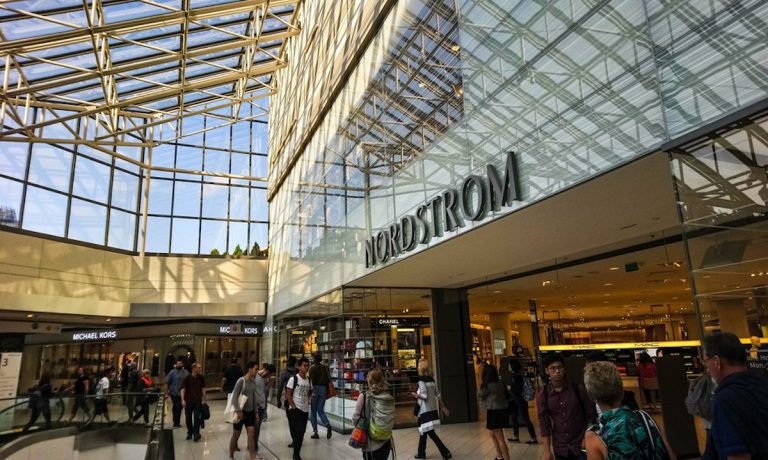
It’s a bad day to be Nordstrom.
Beyond the 30% single-day drop in its stock, the Seattle-based operator of 100 flagship luxury department stores has found itself facing a range of real-world problems, most of which have nothing to do with any change in the unmatched buying power of its elite clientele. Within retail circles, Nordstrom, and its laundry list of problems, suddenly appears almost … ordinary.
For a 120-year-old family-run business that has long resided at the tippy-top of the retail food chain, the current humbling is not a reflection of a bad economy, pandemic upheaval or diminished demand for luxury goods. On the contrary, it’s about Nordstrom’s inability to get enough of the exclusive, high-priced designer products on its shelves that its small but coveted slice of the population wants to buy at full price.
It may seem counterintuitive — but in this universe, high and rising prices are touted as the gold standard metric for underlying demand.
“Our average price was down 4%. Not only does that put a lot of pressure on our operations, it just isn’t what the customer wants,” CEO Erik Nordstrom told analysts and investors on the company’s third-quarter conference call on Tuesday (Nov. 23). “The customer wants these top premium brands, and so our mix has skewed a little more lower-priced than our customer wants,” he added.
Execution vs. Exclusivity
Nordstrom is placing much of its current financial blame on the performance — or more precisely, the underperformance — of its off-price Nordstrom Rack unit, which now has almost three times as many locations as the namesake banner.
“Nordstrom Rack has been challenged by low inventory levels in premium brands in key categories such as women’s apparel and shoes,” noted the CEO and great-grandson of the founder.
“With Rack in particular, it really starts with our source of goods,” Nordstrom said, “and our source of goods got disrupted with the pandemic, and it resulted in just a flat-out shortage of inventory. We’ve been significantly under inventory plans all year.”
In short, Nordstrom is facing a year-long failure to get on its shelves the branded luxury products that its price-insensitive customers want, a problem that is now also flowing downstream to its off-price subsidiary.
Again, supply chain issues in retail are about as “de rigueur” as it gets right now, with every entity from Walmart to Macy’s contending with the same challenges. But in a place where the final selling price is not really a consideration or concern — in fact, higher prices are desirable — the inability to find a way to get merchandise is not insignificant.
Like other ordinary department stores, Nordstrom is also in the midst of adapting to the changing digital demands of its customers, as well as trying to react to their changing sense of fashion, where once it was more likely to shape the decisions itself. To wit, Nordstrom touted the upcoming addition to its website of 20,000 sports team shirts, hats, jackets and other merchandise from Fanatics, a company whose athletic-themed gear is pretty much already available online and all over the world — which is to say, hardly exclusive.
With roughly $3 billion — or half — of its market value evaporating over the past eight months, Nordstrom’s list of ordinary problems is clearly starting to mount. Whether the company can retain its prior status as the pinnacle destination for affluence and luxury shopping remains to be seen, but the leadership team assured investors they’re all over it, even though customers are the only ones who get to vote.
“When we look across the landscape, we need to deliver more. We need to grow market share and deliver greater profitability, and we are acting with a sense of urgency to do so,” Nordstrom said.